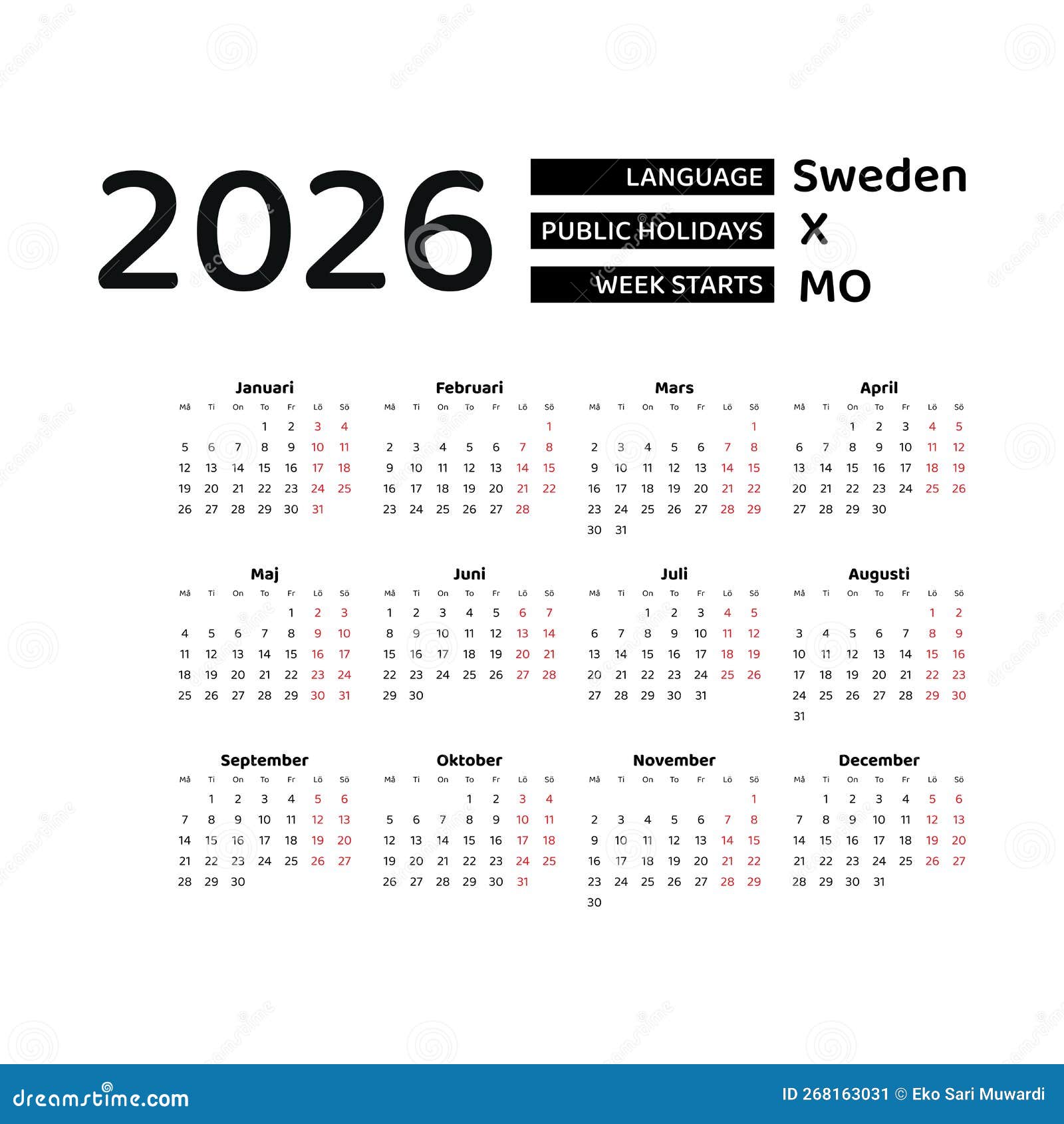Navigating Time In Sweden A Guide To The 2026 Calendar
With enthusiasm, let’s navigate through the intriguing topic related to Navigating Time in Sweden: A Guide to the 2026 Calendar. Let’s weave interesting information and offer fresh perspectives to the readers.



The year 2026 holds significance for Sweden, not only as a marker of time but also as a point of reference for numerous events, holidays, and cultural observations. This calendar year, like any other, is a tapestry woven with threads of tradition, innovation, and societal evolution, offering a unique perspective on Swedish life.

Sweden, like many European nations, adheres to the Gregorian calendar. This system, established in 1582, is a solar calendar with 12 months, each with a specific number of days. The year is divided into four seasons: Spring, Summer, Autumn, and Winter.

The Swedish calendar is punctuated by a diverse array of holidays, both national and religious. These dates hold cultural and historical significance, providing opportunities for celebration, reflection, and community engagement.

The 2026 calendar serves as a vital tool for planning and navigating everyday life in Sweden. It helps individuals and organizations:

A: The most important holidays in Sweden are Christmas, Easter, Midsummer’s Eve, and National Day of Sweden. These holidays are often celebrated with family and friends, and they offer a glimpse into Swedish traditions and culture.

A: Yes, many Swedish holidays have unique customs and traditions. For example, Midsummer’s Eve is celebrated with bonfires, dancing, and feasting, while Christmas Eve is a time for family gatherings, traditional meals, and the exchange of gifts.

A: The Swedish calendar is based on the Gregorian calendar, which is the standard calendar used worldwide. However, Sweden has its own unique holidays and traditions that may differ from other countries.

The 2026 calendar in Sweden is a dynamic tool that reflects the country’s rich history, cultural traditions, and societal evolution. It serves as a guide for navigating time, planning events, and understanding the nuances of Swedish life. By utilizing this calendar, individuals and organizations can effectively manage their time, celebrate important occasions, and contribute to the vibrant tapestry of Swedish culture.









Thus, we hope this article has provided valuable insights into Navigating Time in Sweden: A Guide to the 2026 Calendar. We thank you for taking the time to read this article. See you in our next article!
Your email address will not be published.